When embarking on a new project, gathering insights from stakeholders is crucial for crafting a well-rounded plan. Their unique perspectives can enhance decision-making and ensure that the plan resonates with everyone's interests. In this article, we'll explore effective strategies for soliciting and incorporating stakeholder input, creating a collaborative environment that fosters innovation. So, let's dive in and discover how to elevate your planning process with valuable contributions from those who matter most!
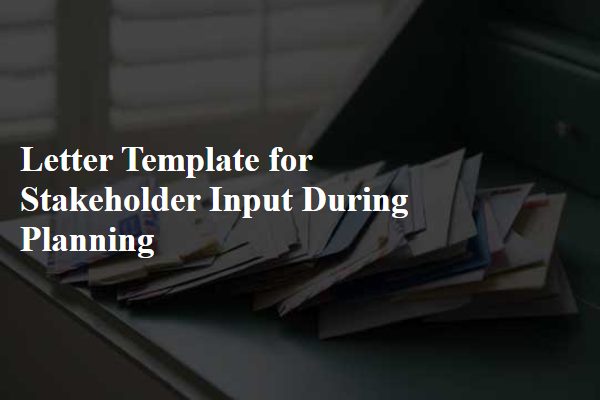
Stakeholder identification and engagement purpose
Stakeholder identification serves as a crucial step in project planning, ensuring that all relevant parties are considered. Effective engagement with stakeholders, such as local community groups, government agencies, and industry experts, fosters collaboration and transparency throughout the planning process. For instance, their input can shape decisions regarding environmental impact assessments or resource allocation for projects like renewable energy developments in areas like California. Engaging stakeholders can lead to diverse perspectives and innovative solutions while addressing concerns raised by affected communities. Moreover, it strengthens relationships and builds trust, crucial for smooth project execution and long-term sustainability.
Clear objective and scope of the project
During the planning phase of any successful project, it is crucial to establish a clear objective anchored in measurable goals for stakeholders. Defining the project scope involves detailing specific deliverables, timelines, and resource allocations necessary to achieve the desired outcomes. Stakeholders must be engaged to provide insights on risks, budget constraints, and potential barriers. Transparent communication can enhance collaboration among diverse entities, such as project managers, team members, and external partners. Moreover, identifying key performance indicators (KPIs) can facilitate tracking progress, ensuring that objectives remain aligned with strategic priorities throughout the project's lifecycle.
Channels for feedback and communication
Effective communication channels are crucial for gathering stakeholder input during the planning phase of a project. Methods such as online surveys (utilizing tools like SurveyMonkey or Google Forms) may facilitate anonymous feedback from participants. Regularly scheduled virtual meetings (via platforms like Zoom or Microsoft Teams) provide opportunities for real-time discussions. Email communication (using dedicated project email addresses) ensures that all stakeholders receive updates and can express their thoughts in detail. Feedback workshops held in-person or online allow for collaborative brainstorming sessions, fostering a deeper understanding of stakeholder concerns. Document management systems (like SharePoint or Dropbox) enable stakeholders to access project files, review materials, and provide comments directly, streamlining the feedback process. Effective utilization of these diverse channels can enhance engagement and ensure that stakeholder perspectives are integrated into project planning.
Timelines for input submission and response process
Effective planning requires structured timelines for stakeholder input, ensuring a comprehensive response process. Initial feedback submission is scheduled for November 15, 2023, allowing stakeholders ample time to review pertinent documents, including project outlines and objectives. A follow-up meeting, set for November 22, 2023, will provide a platform for discussion of input received. Responses to stakeholder contributions will be communicated by December 5, 2023, ensuring insights are acknowledged promptly. Finalized plans will be published on December 12, 2023, incorporating relevant feedback to foster collaborative efforts. This transparent process enhances stakeholder engagement and strengthens project foundations.
Assurance of confidentiality and data privacy measures
Stakeholder input during planning is crucial for developing effective strategies in various settings, such as corporate projects or community initiatives. Assurance of confidentiality and data privacy measures is paramount to foster trust among all participants. Implementing robust protocols (such as GDPR compliance for projects in Europe) ensures that sensitive information remains protected. Data encryption and access controls safeguard personal data against unauthorized use. Clear communication regarding data handling practices, including destruction timelines and storage methods, builds confidence among stakeholders. Regular audits and training on data privacy enhance compliance and accountability, ensuring adherence to regulations and ethical standards.
Letter Template For Stakeholder Input During Planning Samples
Letter template of stakeholder feedback request for strategic development
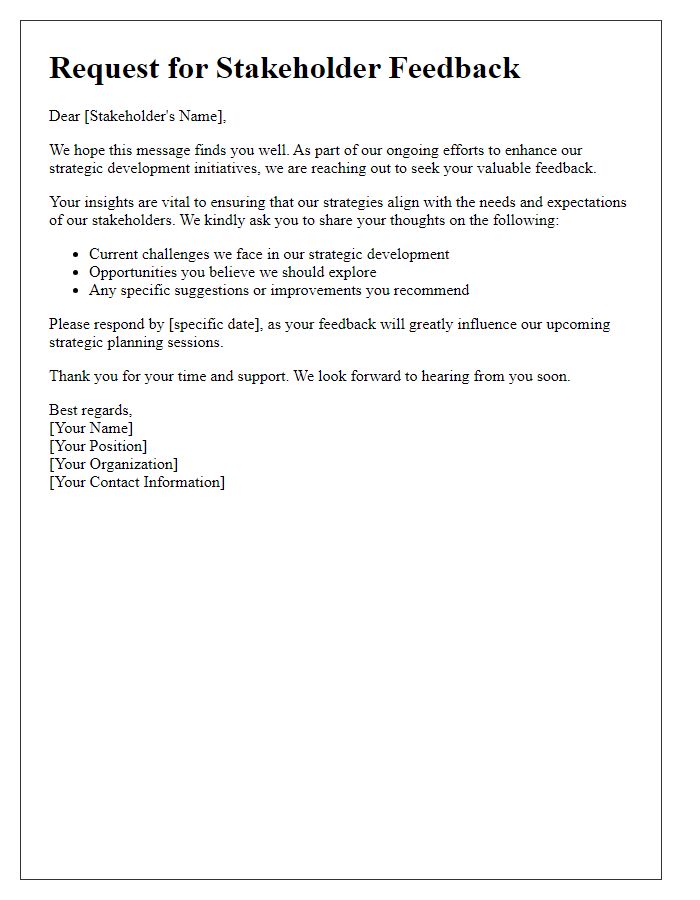
Letter template of stakeholder involvement invitation for planning sessions
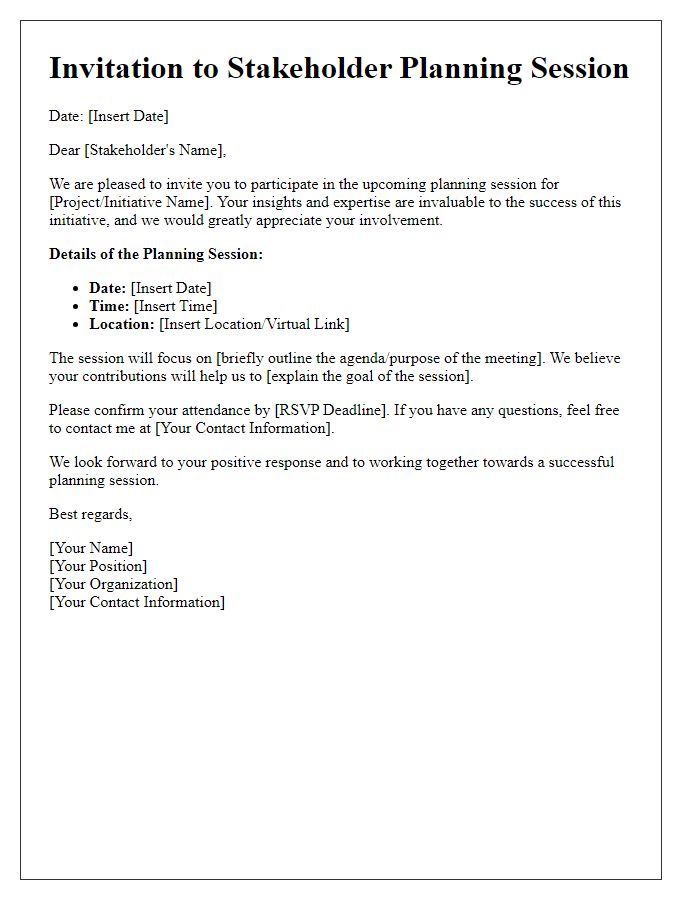
Letter template of stakeholder opinion solicitation for planning initiatives
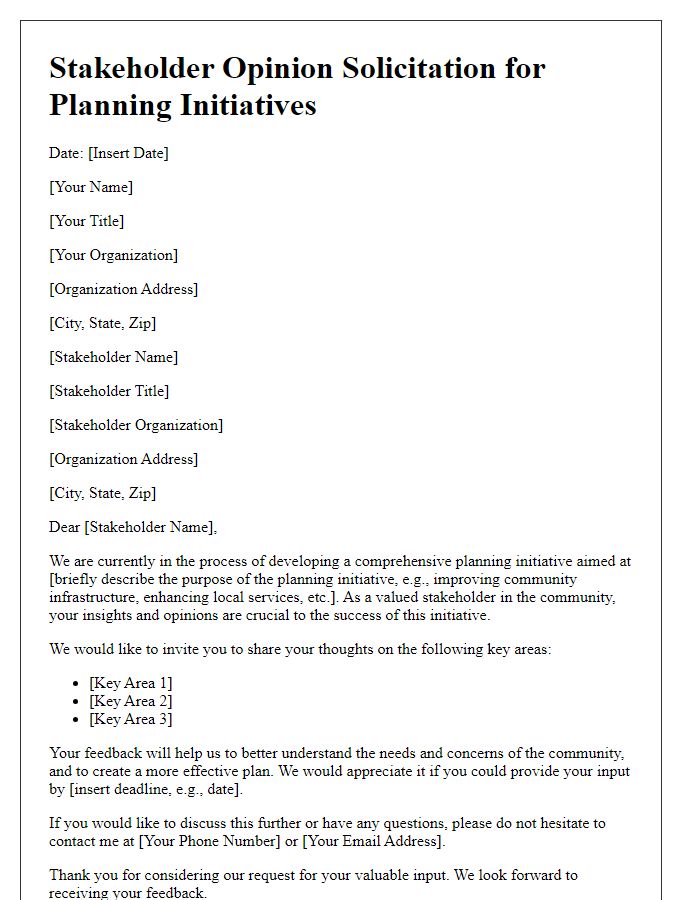
Letter template of stakeholder survey distribution for planning purposes
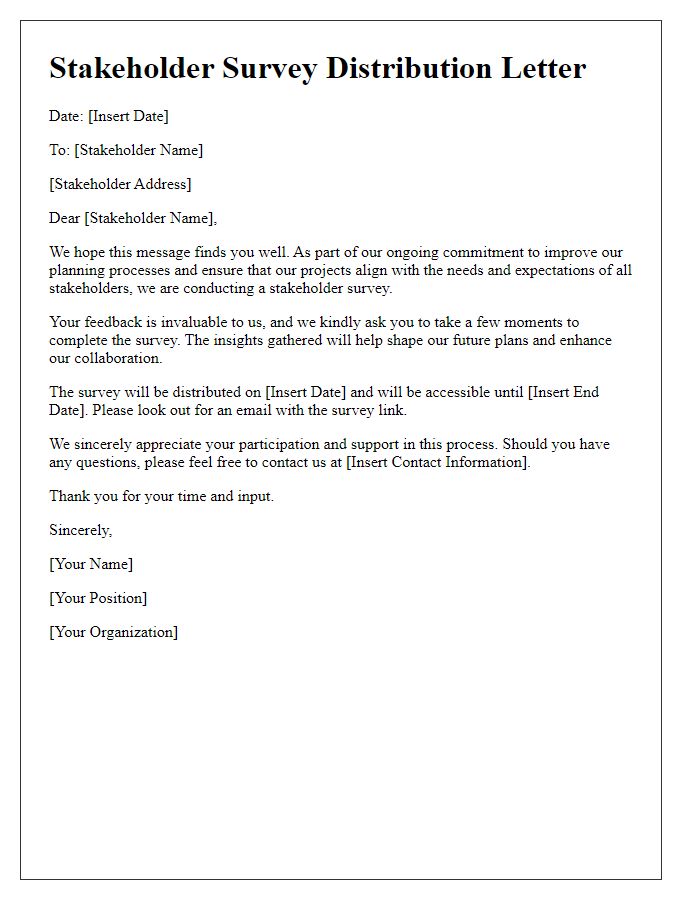
Letter template of stakeholder collaborative input for planning framework
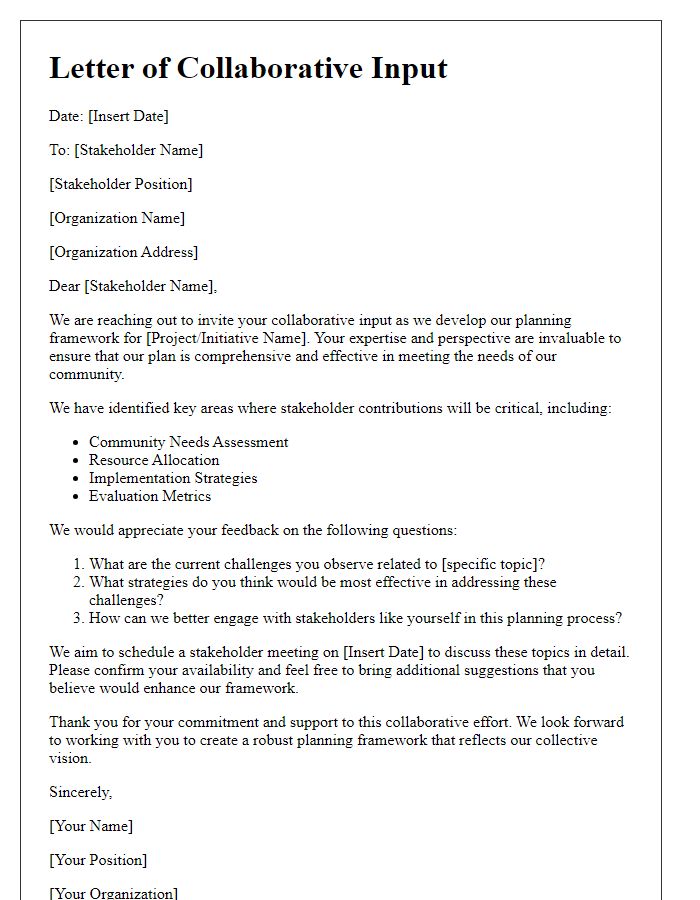

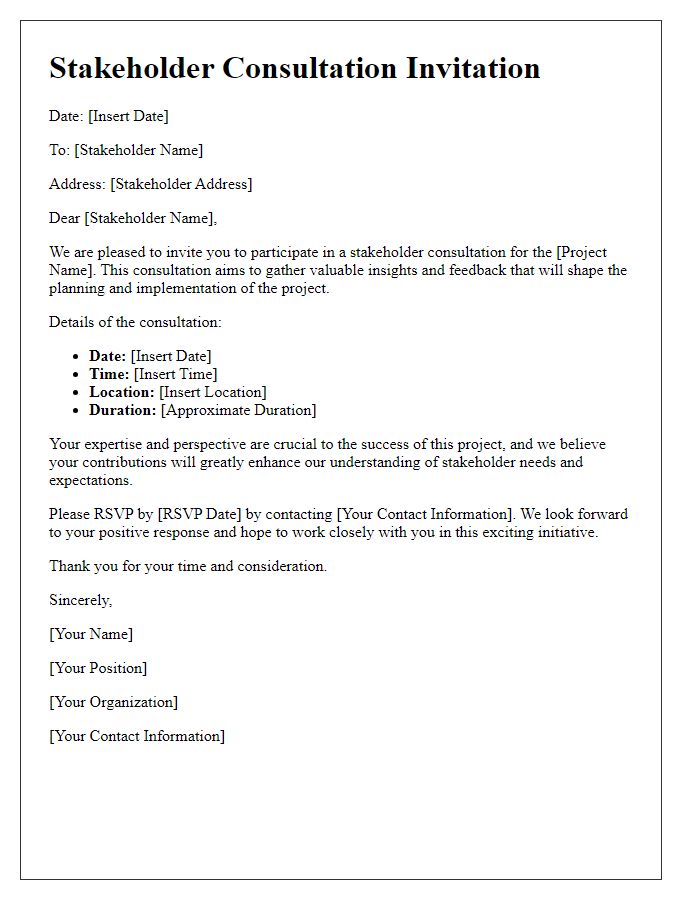
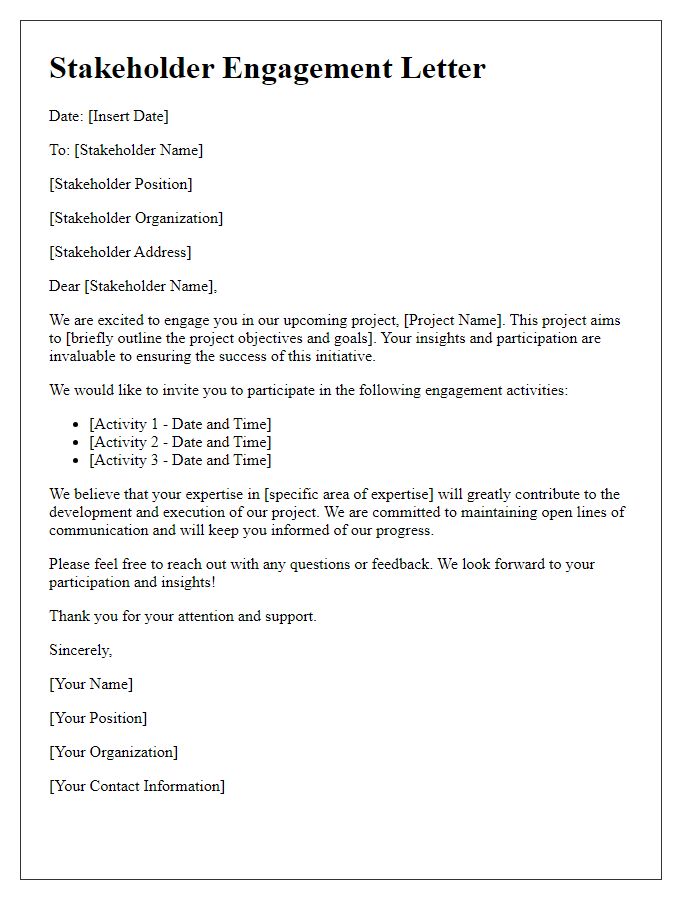
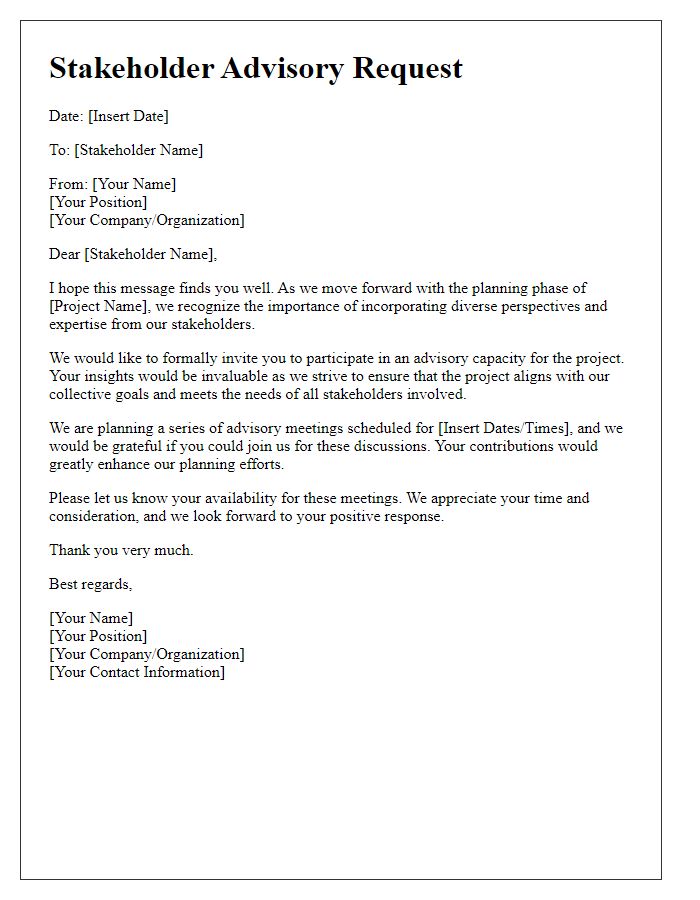

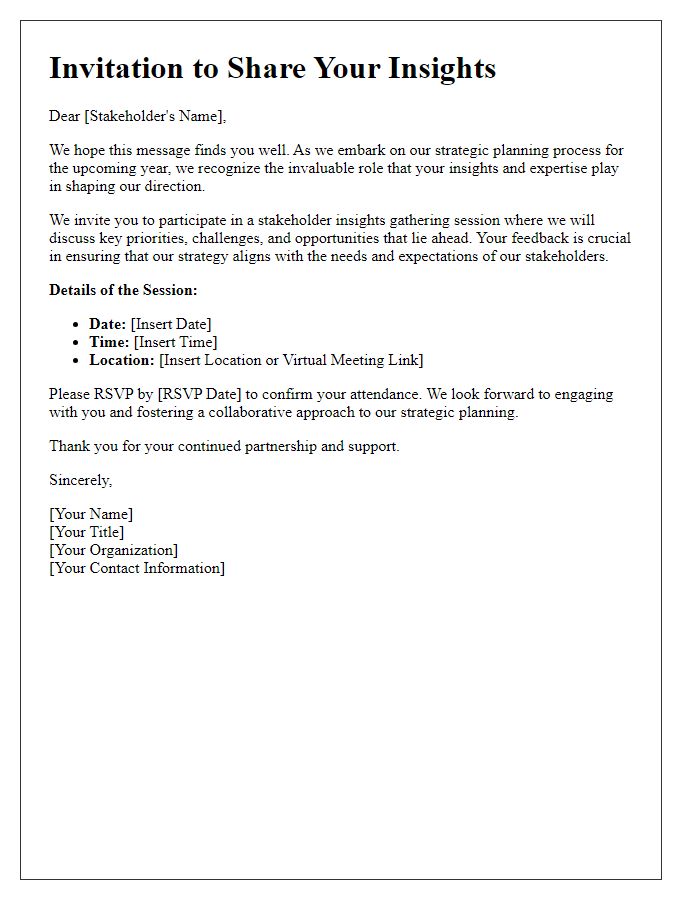


Comments